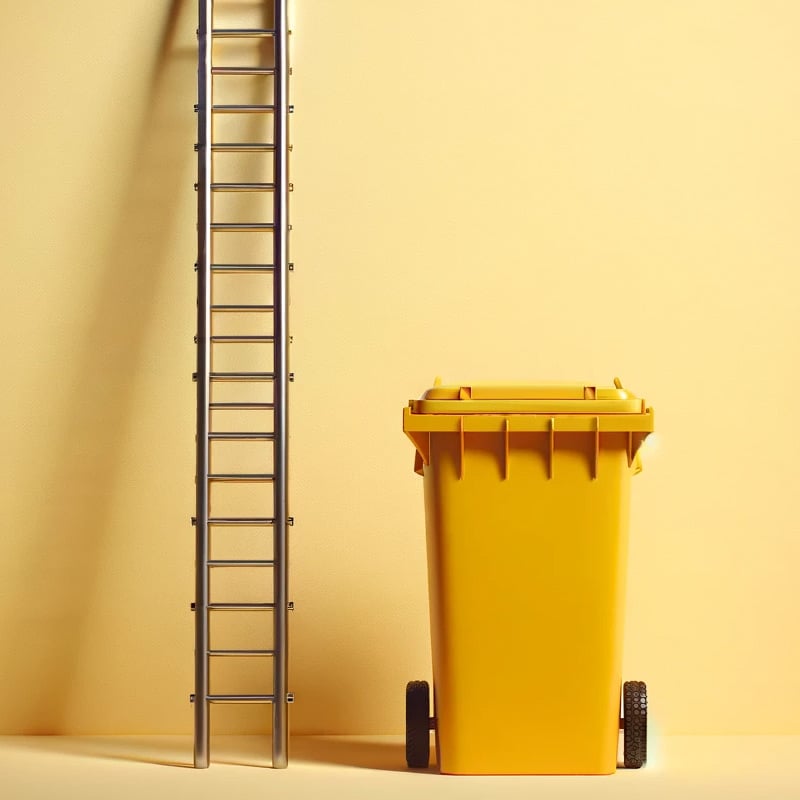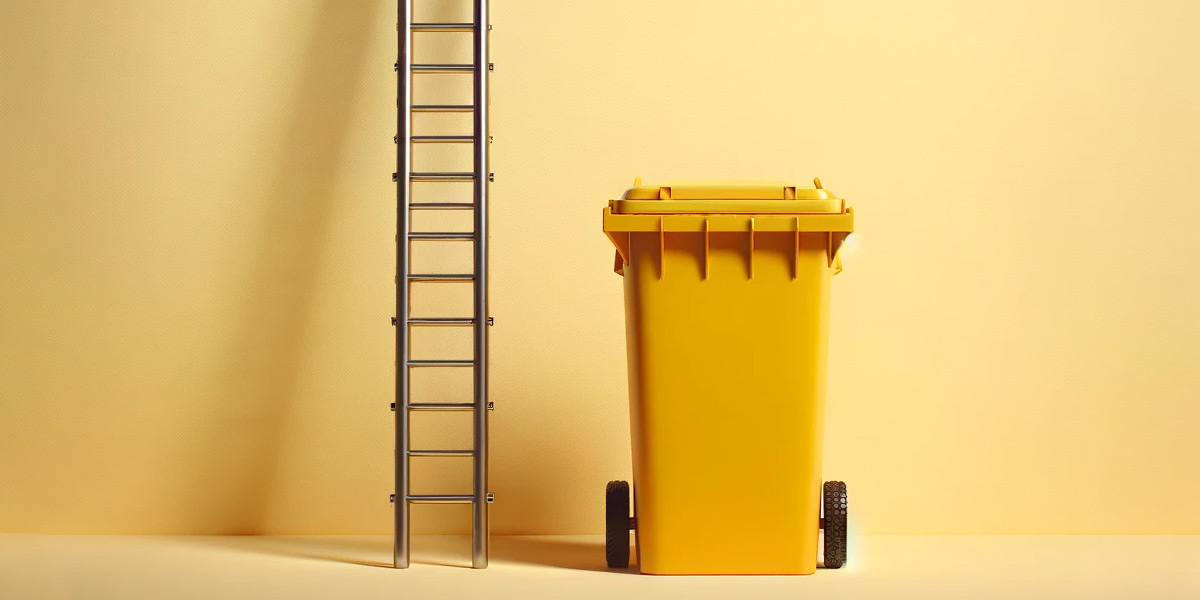The Lansink Ladder has been the standard for the waste hierarchy since its introduction in 1979. Its introduction was a major step forward and led to new insights around waste management at the time. But is Lansink's Ladder still of value today, especially on the road to a circular economy? The short answer is: yes, especially because of the simplicity and practical applicability of the model. In this article, you will get a text and explanation so that you can also understand what Lansink's Ladder can mean for your company.
What is the Ladder of Lansink?
The Ladder of Lansink is a model for the treatment of waste. For this, the Ladder gives a preference order: prevention and reuse are most desirable, and incineration and landfill least. The model was introduced in 1979, and incorporated into the Environmental Management Act in 1993 (the basis for the LAP (National Waste Plan).
The Lansink Ladder is named after Member of Parliament Ad Lansink, who was a biochemist concerned with waste before 1979.
What does the Ladder of Lansink do?
The Lansink Ladder provided new insights into waste management from its introduction in 1979. Today, the model still gives you quick and clear insight into where you stand in terms of waste management in your company.
In addition, the model is very pragmatic: you can use it to take (small) steps towards more sustainability and circularity in your waste processing.
Thus, the Ladder of Lansink stimulates prevention of waste (so ensure that something does not become waste), or - if something does become waste - a more sustainable way of processing.
Thanks to its simplicity and practical applicability, the model became the accepted order of preference for waste processing both nationally and internationally.
The steps of the Ladder of Lansink
The steps of the Ladder of Lansink are:
Prevention
Prevention is the highest rung on the Ladder of Lansink, and means: making sure no waste is created.
Reuse
Reuse means: using a product repeatedly for the same purpose
Recycling
Recycling means: recovering raw materials from old products or packaging. This can then be used to make new products or packaging.
Energy
Energy means: extracting energy from non-reusable waste so that it can be used as fuel to generate energy. But also: using the energy to make new fuels.
Incineration
Incineration means: burning waste without necessarily recovering energy.
In the circular economy, incineration without recovery is unthinkable. In the Netherlands, this is why it already no longer occurs; waste-to-energy plants always generate energy when they burn waste.
Landfill
Landfill means: dumping waste somewhere, without recovering anything from it in any way. Think of the landfills of old.
In the circular economy, dumping without recovery is unthinkable. In the Netherlands, therefore, it already no longer occurs - with minor exceptions.

The difference between Lansink's Ladder and the 'R-ladder'
Lansink's Ladder is a very different model from the much more recent R-ladder. Although at first glance they look alike, there are major differences.
Perhaps the biggest difference between the two is that the R-ladder is a circular waste model, and the Ladder of Lansink is a linear waste model:
- With the R-ladder, the goal is that raw materials stay in the chain, or become new raw materials. So that eventually there is no more waste.
- With the Ladder of Lansink, the goal is to process waste as sustainably as possible. Raw materials move in one line from product to waste. That is why 'landfill' and 'incineration' are still on this ladder; 2 ways of processing waste that are not an option in a circular economy.
The image below shows the difference nicely:
- Another difference is that the R-ladder was explicitly developed from the grand goal of changing our entire waste system from linear to circular.
The Ladder of Lansink in the circular economy
It speaks to the quality and power of Lansink's Ladder that it is still used today. But what then is the model's place and value in (the path to) the circular economy? Because the model in itself is not circular in design. We discuss that below.
Lansink in a circular format
First of all, can we convert the Ladder of Lansink and make it circular? Yes, we can. Then we need to look at the lower and upper steps of the Ladder:
- At the bottom, we draw the line at "Recycling. Everything below that is not circular because the raw materials cannot be reused after a single use. This applies even to the 'Energy' step.
- At the top, the highest step is 'Prevention'. But from a circular perspective, we want to look further. Because while recycling can be a good solution, this does not excuse us from looking further into alternatives. For example, how a different design or choice of material can affect waste prevention. Or maximizing the value of those streams. Therefore, we would like to extend the Ladder with a number of additional steps. These reflect the aim of extending the life of raw materials, such as Rethink, and Reduce.
Understandable and pragmatic
Compared to the R-ladder, Lansink's Ladder is wonderfully understandable and pragmatic. Where are you now, where do you want to go and what is possible? Not every company is in a position to make big steps up the ladder because it sometimes requires systemic change. Lansink's model also allows you to make relatively quick steps without having to change your entire waste, purchasing or transportation system. Of course, we should not lose sight of the big picture perspective of a fully circular economy. But sometimes going from "Energy" to "Recycling" is already wonderful. Even small steps at the bottom of the ladder can have a big impact and make a difference.
Still of value
Ad Lansink unleashed a waste revolution in 1979 with his model, which continues to this day. Without his Ladder, the R-ladder may never have been around either, and we would not be as far along the path to circularity. So the model is still of value today.
Where do you stand on the Ladder of Lansink?
The Ladder of Lansink as well as the R-ladder are wonderful theoretical models on the way to a circular economy. At the same time, we must continue to realize that they are "only" theories. They help us think big, but on their own they do not change the world.
Together we change the world, by working pragmatically: where are you now on the Ladder of Lansink, where do you want to go and how do you get there? To answer these questions, the various ladders are wonderful tools.

Getting started with the ladders?
We have almost 3 decades of experience in the field of waste management and management and will help you climb the waste ladder at your pace, on your way to full circularity. Would you like to meet without obligation and spar about your opportunities? Then don't hesitate and book a no-obligation appointment.
Stay informed
Stay up to date on all new developments? Follow us on LinkedIn or Instagram. Or subscribe to the newsletter. Are you curious about what Milgro can do for your operations and waste process? Contact us













